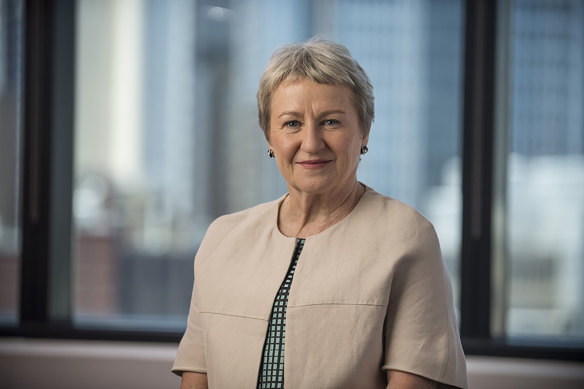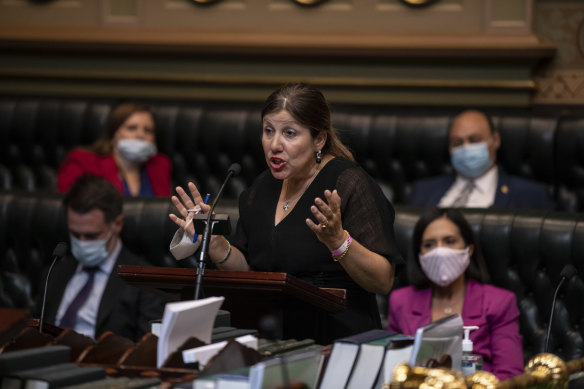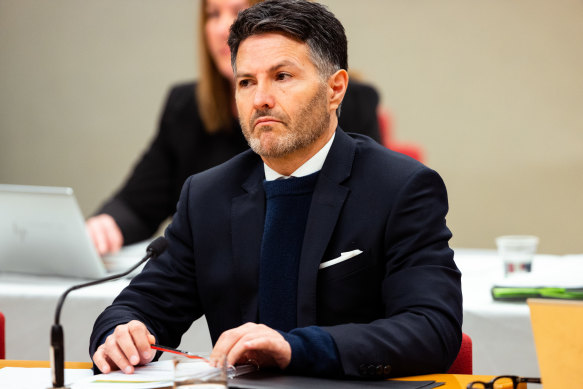The state’s workplace safety regulator, SafeWork NSW, will face a six-month investigation amid allegations it failed to protect workers from serious injuries and death, and its inspectors were subjected to political interference.
The Sydney Morning Herald can reveal the NSW Auditor-General Margaret Crawford will conduct a performance audit into SafeWork NSW early next year, following opposition work health and safety spokeswoman Sophie Cotsis outlining a series of concerns.

In one letter, Cotsis said serious work health and safety breaches weren’t being properly followed up by SafeWork with on-site inspections. “It has been brought to my attention that a number of fatalities or serious injuries have occurred after multiple notifications to SafeWork were not adequately followed up,” the letter said.
“Inspectors reported being pressured by various internal and external stakeholders to either issue or not issue fines, notices or recommendations for prosecutions for serious safety breaches.”
The auditor-general’s decision to initiate a performance audit follows repeated calls for an inquiry into SafeWork, all of which have been rejected by the Perrottet government.
The most notable recommendation for a public inquiry came from retired NSW Supreme Court judge Robert McDougall in April 2021, as part of an independent inquiry into the scandal-ridden workers compensation scheme icare. In his report, McDougall said, “I have come to the view that such a review is desirable. In doing so, I have taken into account submissions as to the suggested present inefficacy of SafeWork NSW’s activities.”

The Herald can reveal that the NSW cabinet response, after being considered by the then-responsible minister, Kevin Anderson, was “in the absence of compelling evidence that a review is warranted, it would not be an appropriate use of resources at a time when SafeWork is strongly focused on protecting workers in NSW from the ongoing effects of the COVID-19 pandemic”.
The current relevant minister, Victor Dominello, said he welcomed the NSW auditor-general’s audit. “Independent oversight is both powerful and instructive,” he said.
SafeWork was created in 2015 when the then-state’s workers compensation scheme, WorkCover, was split into three entities: icare, SIRA and SafeWork. It was set up as an independent statutory body responsible for regulating work, health and safety and reducing work-related fatalities, serious injuries and illnesses.
However, SafeWork was absorbed into the Department of Customer Service with neither a separate board, nor CEO, nor an oversight body.

Described by insiders as the department’s “poor cousin”, it has been accused of succumbing to political interference, including in a survey obtained by the Herald.
The Public Service Association (PSA) survey conducted in late 2020 found that 20 per cent – one in five inspectors – believed political pressure was behind orders not to issue a contravention notice to a business even when they believed they had evidence of safety contraventions. This included one case where someone died, and several that involved “serious incidents”.
It cited one inspector saying he had been asked not to attend a site for inspection to “not upset the government agency”. Another said the agency had “lost its identity” and was “not independent any more”. Forty-two per cent of respondents said they had been instructed or pressured by a manager or director to recommend no further action be taken in cases where they had enough evidence to recommend prosecution.
The Herald spoke to a number of current and former inspectors, bureaucrats and experts, who described SafeWork as an absent regulator suffering from cultural problems including bullying, as well as structural problems.
They said there was a lot of churn among employees due to bullying and not being listened to. The latest figures reveal that in the year to June 30, 26 inspectors have either resigned or retired from SafeWork.
One said there were multiple examples where inspectors had recommended further investigations, fines or prosecutions for serious safety breaches that were ignored.
One former inspector, who requested anonymity for fear of retribution, told the Herald that SafeWork wasn’t fit for purpose and had become a “thin veneer of regulation and a safety system called luck”. Another said staff were encouraged to “shut up, see nothing, do nothing”.
The Herald has obtained a briefing document for the Investigation Decision Making Panel (IDMP) at SafeWork titled “Ongoing contraventions of the work health and safety legislation regarding friable asbestos removal by Byrne Demolition”. It stated that in 2017, SafeWork inspectors went to a site and found serious contraventions including an 18-year-old woman breaking up friable asbestos material and not wearing a mask. Other contraventions stated in the document included subcontractors on the site not having the necessary training to handle friable asbestos or proper personal protective equipment including masks. A report from the inspectors recommended a full investigation, alleging Byrne was allowing contractors to dump 20 tonnes of friable asbestos at a public waste facility without being properly enclosed.
The report said the company had an “extensive compliance history under two entities and had received prohibition notices and improvement notices in relation to the matters”.
SafeWork dismissed the recommendation for a full investigation. Further, documents stated that it held discussions and meetings with Byrne Demolition and requested it make a submission into the risks of wrapping friable asbestos into trucks.
The NSW Ombudsman was asked to look into how SafeWork handled some matters, including Byrne’s Demolition. In May 2020, a report from the Ombudsman said, “The seriousness of the concerns about Byrne’s Demolition’s practices, coupled with the fact that it failed to provide a submission required of it as part of a program of compliance, warrants further consideration of whether any action should be taken in relation to Byrne. We have recommended to SafeWork that it should consider taking further action.”
A lawyer for Byrne said that in the company’s view there was nothing to “submit” because no fines or prosecution applied.
“Inspectors reported being pressured by various internal and external stakeholders to either issue or not issue fines, notices or recommendations for prosecutions for serious safety breaches.”Sophie Cotsis, opposition work health and safety spokeswoman, in a letter outlining her concerns
A spokesman for Byrne said the report from the SafeWork inspector was “bullshit”. He said there were no fines, no court, no prosecutions in 30 years. He denied allegations that their workers were handling fried asbestos without proper equipment. In response to claims that 20 tonnes of friable asbestos was dumped without being properly wrapped, he said Byrne had taken 60 to 70 loads from other sites previously and at the time it was not a requirement to wrap it. “We did nothing wrong,” he said. The spokesman said he was told by a senior executive at SafeWork that it wasn’t a requirement to wrap the asbestos, but wet it down and cover it.
Cotsis welcomed the auditor-general’s decision to review SafeWork, adding the need for action in fixing SafeWork was now.
”We have had a former judge of the Supreme Court and the auditor-general both agree that the effectiveness of SafeWork NSW should be examined in detail. What will it take for this government to be shocked by the growing mountain of evidence of the turmoil and dysfunction within SafeWork NSW?” she said.
Cotsis raised a series of concerns in her letters to the auditor general, including SafeWork’s handling of residential aged care homes, to ensure operators were supplying staff with proper protective equipment during COVID-19.
After a series of questions in parliament in the past few months, SafeWork revealed in questions on notice that it had received 104 notifications of breaches of regulations in aged care homes in NSW between January 2020 and June 2022 and a further 57 requests for service to inspect certain aged care homes. Of those, it admitted it conducted 48 desktop inspections and four onsite visits.
